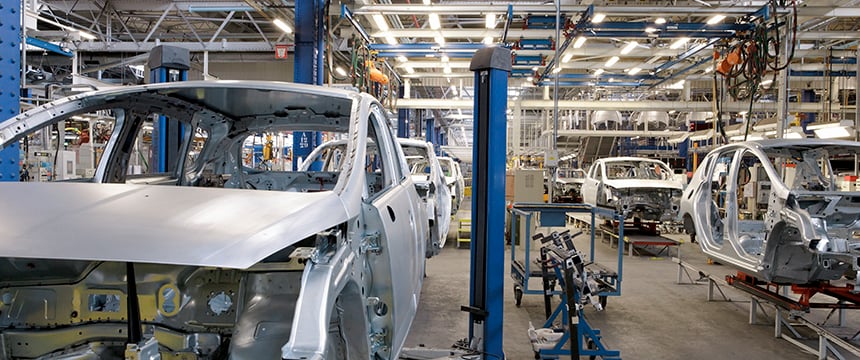Key Impacts and Strategies for Suppliers Affected by the Ongoing UAW Strike

The United Auto Workers Union strike against the Detroit Three automakers that began on September 15th continues with no immediate resolution in sight. The UAW expanded the strike on Friday September 22nd when some 5,500 UAW workers walked out at 38 parts distribution sites across the U.S. belonging to GM and Stellantis following stalled negotiations with the UAW. On September 26th President Biden joined striking autoworkers at a GM facility in Detroit and on September 27th former President Trump held a rally at a metro Detroit automotive supplier. On Friday, UAW President Shawn Fain expanded the strike further, calling on an additional 7,000 UAW workers across Ford and GM to strike at a Ford assembly plant in Chicago, Illinois and a GM assembly plant in Lansing, Michigan. With the announcement, approximately 25,000 UAW workers in total have walked out at GM, Ford and Stellantis facilities. So far, the economic toll of the strike has been estimated at more than $ 1.6 billion, including at least $ 400 million in losses to the OEMS. The estimated length of the strike remains difficult to determine, with some analysts raising the possibility that the strike could last well into the fall. Automotive suppliers need to be ever vigilant in monitoring their operations and taking measures to mitigate the effects of the ongoing UAW strike.
What the UAW Strike Means for Suppliers
The longer the strike continues, and the deeper it cuts, demand for parts and materials will decrease and cash flow to automotive suppliers will be negatively impacted. Suppliers should consider: accelerated collection of receivables (including factoring); shipment of finished goods inventory in order to convert working capital assets to cash (including inquiring whether customers will accept finished goods in excess of EDI releases); deferral of payables where appropriate and clear and communications with lenders and customers to ensure their financial condition is known and needs are met to avoid a significant distress situation.
Again, the length and depth of a work stoppage will dictate the specific workforce actions and accommodations to be made, however, a permanent loss in workforce availability in the current tight labor market must be considered in the context of when production resumes. Suppliers should evaluate the implications of the UAW strike on their labor force, making sure to consider that the strike may continue for a prolonged period.
We are already seeing the ripple effects of the UAW strike, as supply lines outside of the three targets are being affected and, in some cases, shut down. Suppliers should continue to consider and appropriately manage output to prevent an oversupply of outdated or soon-to-be outdated parts when OEM production eventually resumes.
Suppliers should also take particular care to distinguish between projected forecasts and firm orders. Now that a strike has occurred, suppliers should anticipate that projected forecasts may vary considerably from firm orders. Suppliers should manage their production capacity and lead times to sub-suppliers accordingly and evaluate if and when the parties’ terms dictate when projected forecasts become firm orders.
Preparing for a Restart of Production After the Strike Settles
Suppliers should continue to keep in mind that the OEMs are likely to insist on an aggressive production schedule when production resumes to make up for the downtime. As suppliers are aware from the last several years, production shutdowns and restarts can impose significant costs and suppliers should continue to think about how to best mitigate material and labor costs once production resumes. Suppliers also need to fairly allocate their resources in order to meet customer demand. Suppliers should remain in communication with their customers to make clear both the lead time and costs that will be needed for restart after a shutdown.
As the industry continues to deal with the effects of the UAW strike, as well as the continued transition towards electrification and alternative fuels, Foley is monitoring developments and keeping stakeholders up to date.



